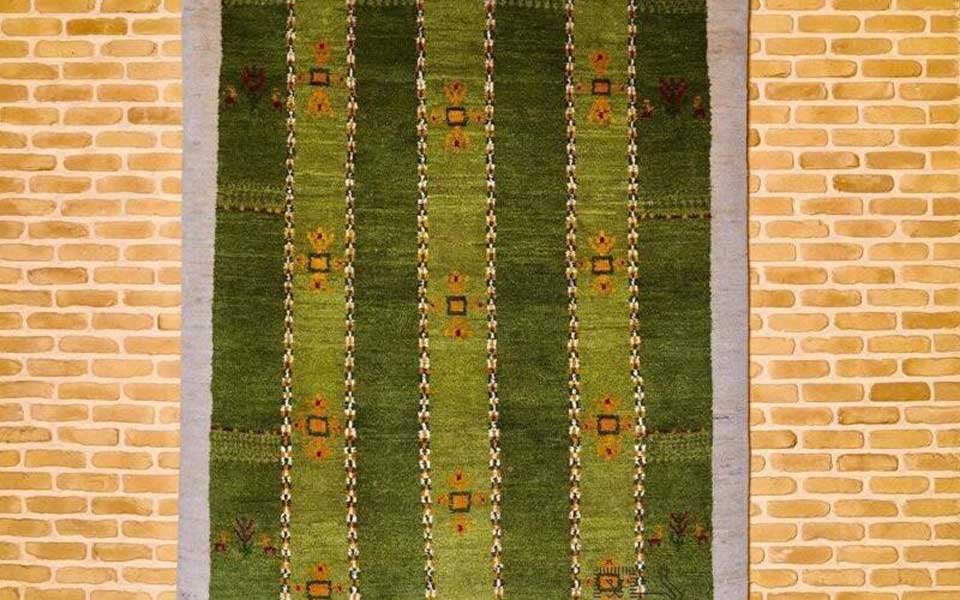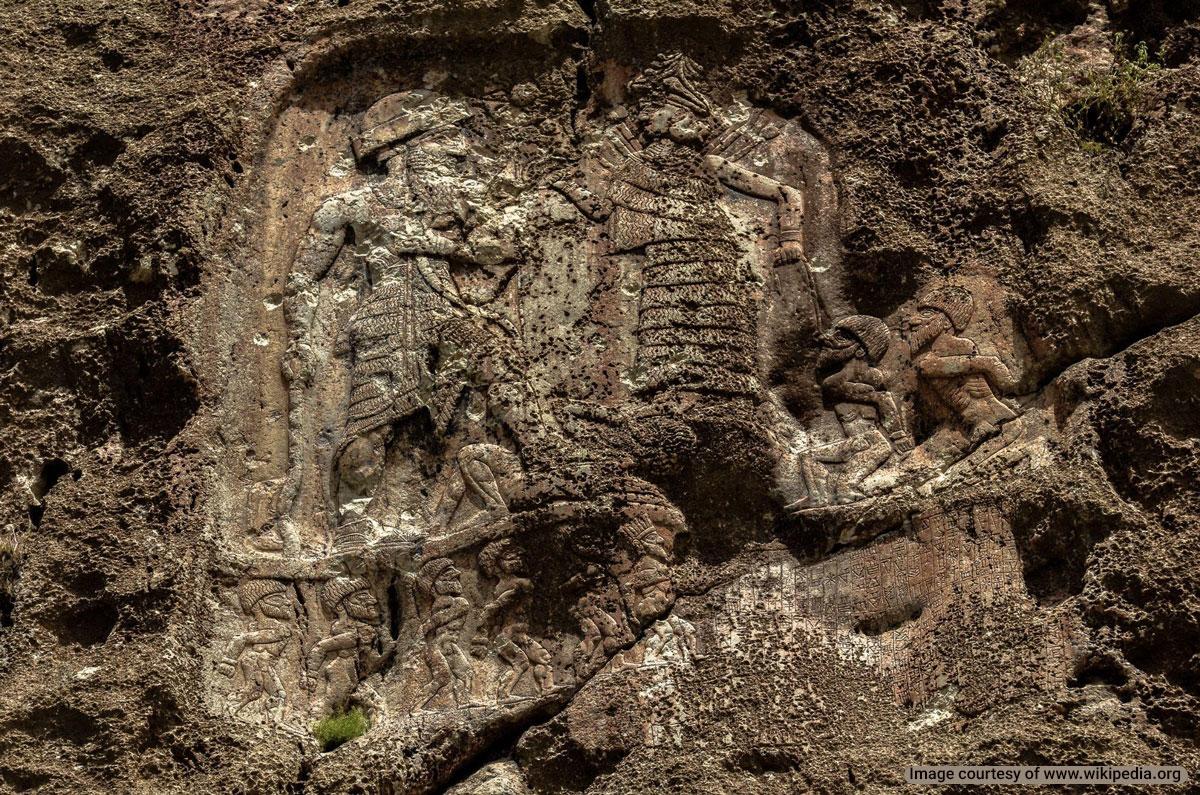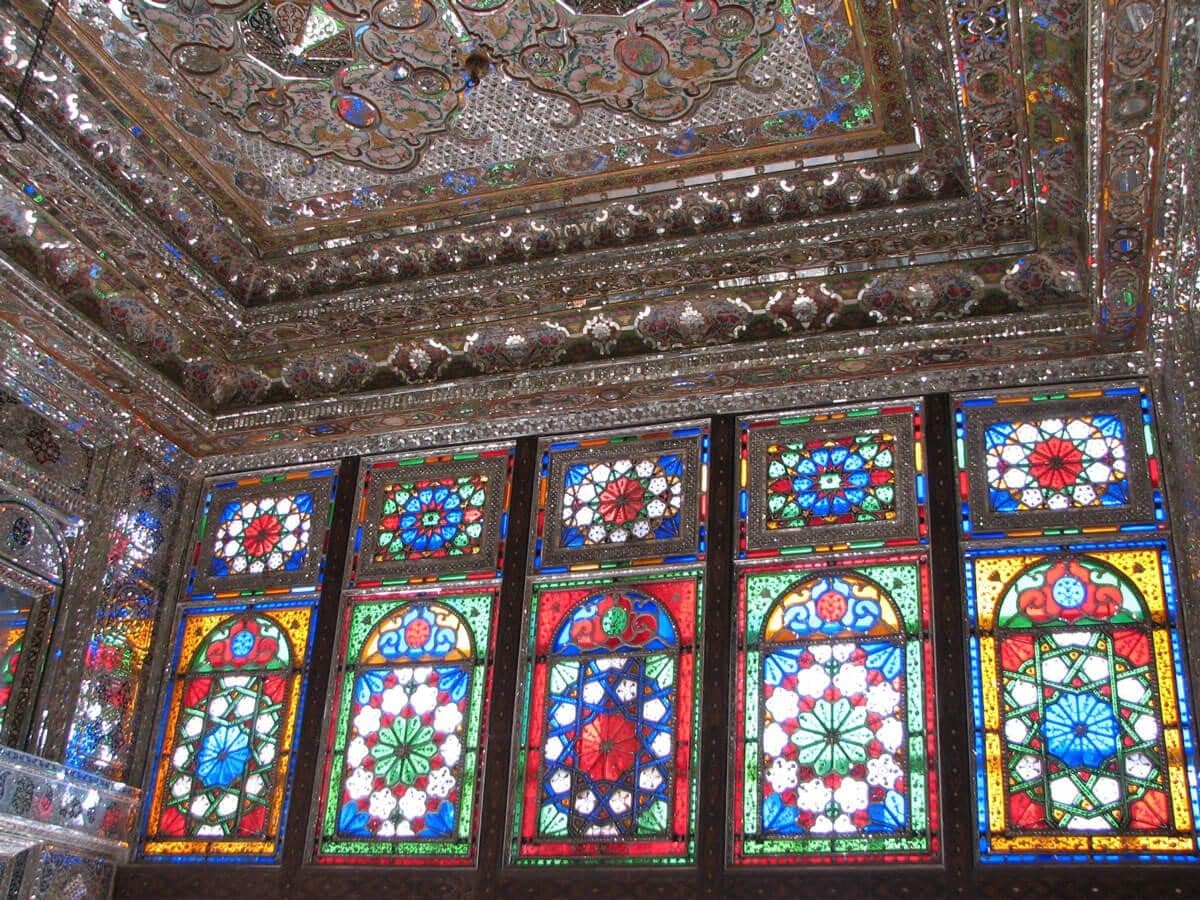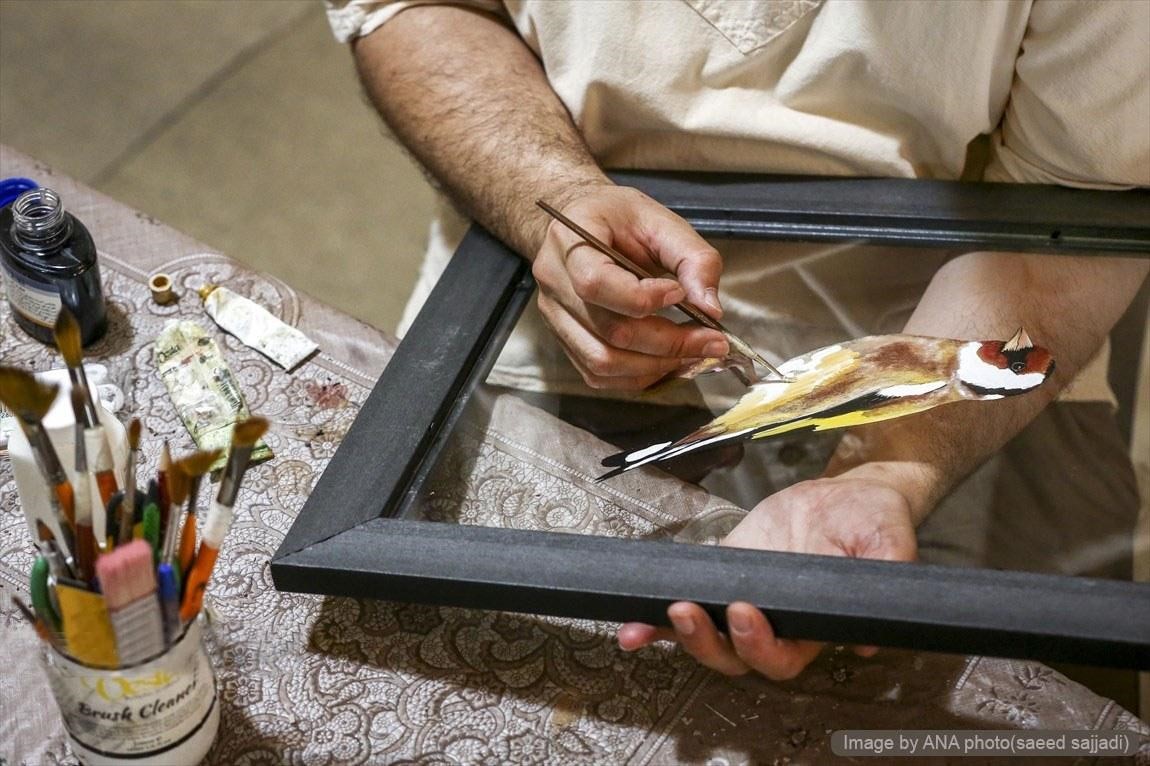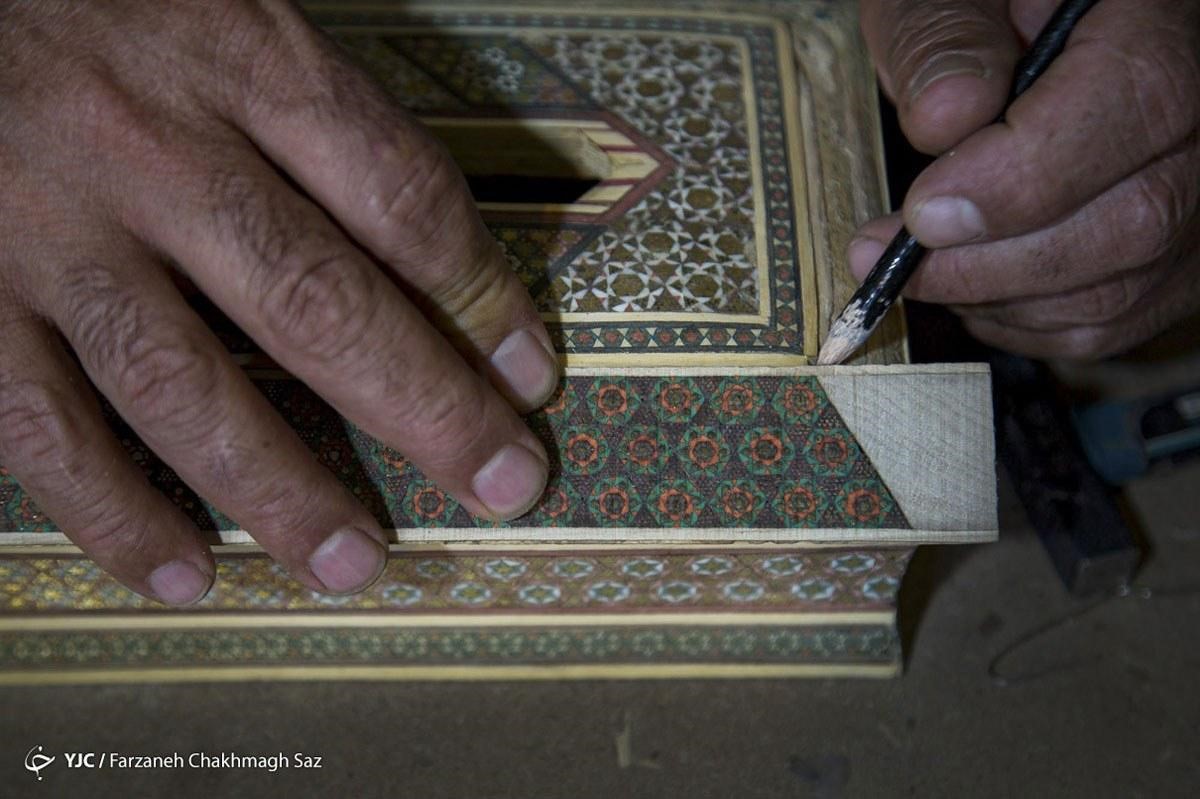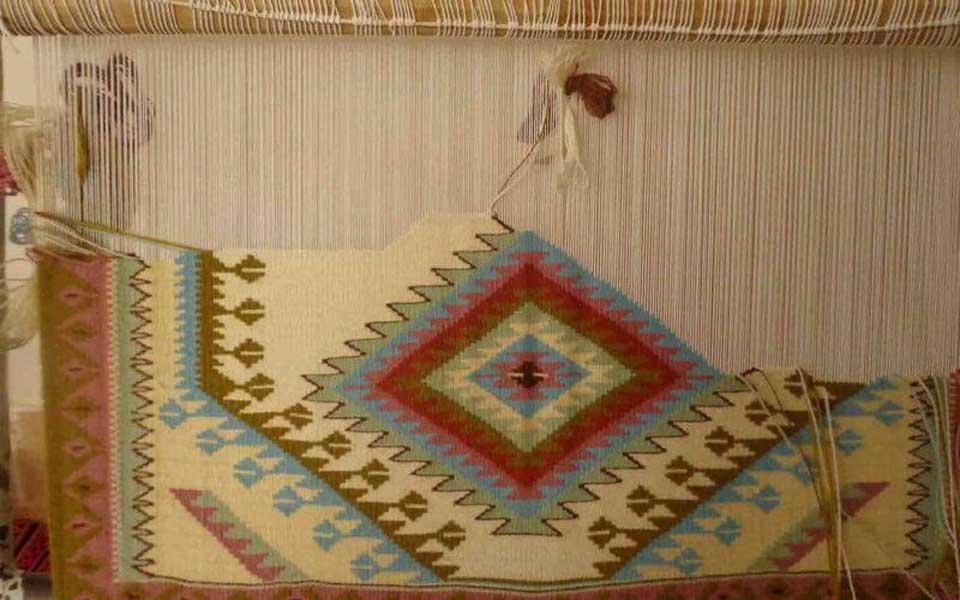
The art of Kilim Bafi or kilim weaving in Iran can be traced back several thousand years ago, which is one of the reasons it’s one of the most prominent Iranian handicrafts. These beautiful rugs are usually hand-woven by Ashayer (nomadic) and rural women, who use improvised designs without any plans or sketches. The art of kilim weaving is more popular in Azerbaijani, Shahsavand, Qashqai, Kerman, Baluch, Bijari, and Sanandaj rural areas and nomadic tribes.
What Is Kilim Weaving?
A Kilim is a type of rug without piles (grain) that is hand-woven by an alternation of warp and weft on the loom. Nomadic and rural women use wool, cotton, and goat hair to weave traditional Iranian kilims.
History of Kilim Weaving in Iran
Kilim is one of the primitive forms of underlay or spread invented by mankind as early examples are estimated to be several thousand years old. In Iran, archaeologists found pieces of rug-like textiles in the caves in the southeast of the Caspian Sea. Based on their findings, the history of kilim weaving in Iran is traced back to at least the 8th millennium BC.
Other discovered historical evidence suggests that in the past, people crafted textiles by shearing sheep and spinning their wool. In addition to pieces of textile found in the Hotu and Kamarband caves near the city of Behshar, archaeologists uncovered a piece of textile in Shush dating back to the 6th millennium BC.
Despite the discovery of handwoven textiles as old as the history of life in Iran, the precise date of the beginning of kilim weaving in Iran remains a mystery. However, archaeologists estimate that the history of the invention of kilim weaving and cloth weaving most likely overlap.
The Golden Age of Kilim Weaving in Iran
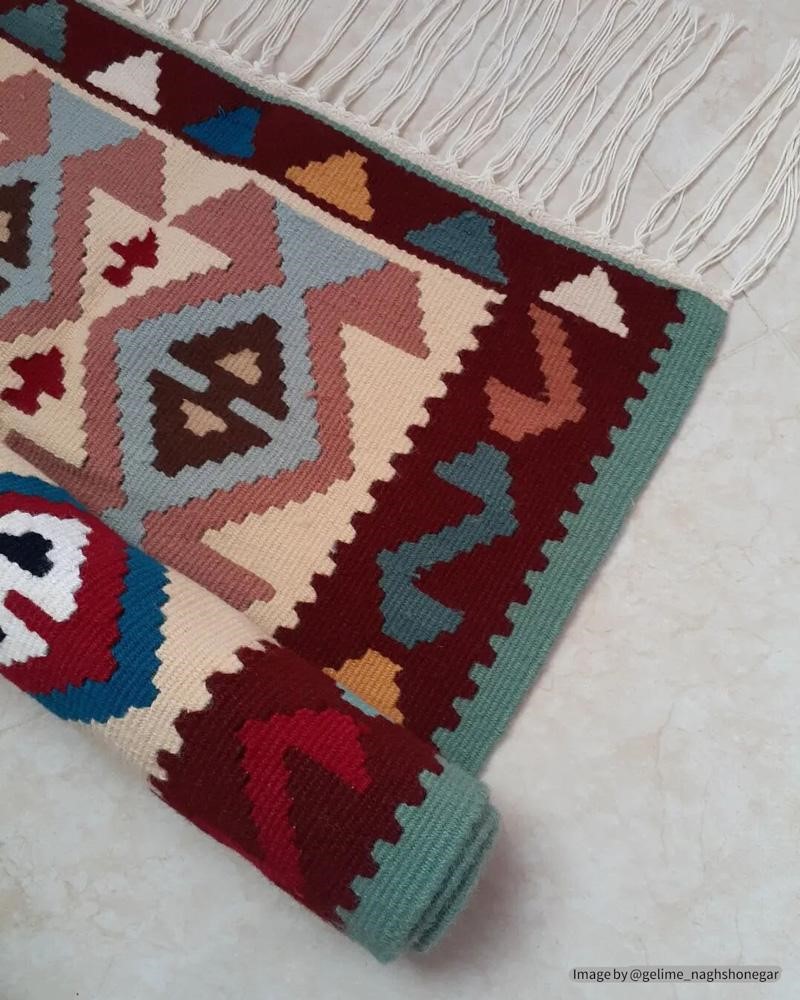
The golden age of kilim weaving in Iran was the 10th century AH (1494–1590), at the time of the Safavid rule. In this period, the art of kilim weaving prospered and attracted royal attention. To the point that gold and silver-coated threads were used in the weaving of some rugs produced by Safavid royal workshops.
The use of gold threads in this type of ancient underlay and its utilization in receiving special guests of the Safavid kings is a descriptive indicator of the value of the kilims in this era.
Kilim Weaving Methods
As one of the oldest handicrafts in Iran, kilim weaving is practiced in three methods, described in the following:
Baft Sadeh Kilim (Plain Weave Kilim)
One of the common methods of kilim weaving in Iran is plain weave. Plain weaving is one of the primitive methods of kilim weaving, and it does not require a weave plan.
In this method, the kilim weaver passes the weft threads one by one through the warp threads. This method of weaving produces a one-sided kilim and demands less effort and time from the weaver compared to other methods.
Embossed Kilim
The embossed method is one of the weave patterns that are very similar to the Qali (another type of Persian carpet). Embossed kilims have piles, similar to Qali. The weaver weaves the kilim according to the weave plan and cuts the piles at the end of the work, he cuts the piles. This method produces magnificent and beautiful kilims but demands more time and effort to weave than the plain weave.
Varni Kilim or Soozani Kilim (Needle Kilim)
The unique feature of Varni Kilim or Soozani Kilim is its improvised weaving pattern. In this method of kilim weaving, like plain weave, the weaver weaves the kilim based on a mental image of the pattern and without a weave plan. Such work requires a creative and serene mind to produce a beautiful handwoven kilim. The weaving method of this type of underlay is called Pood-Chini (weft-cutting).
This kilim is also one-sided without piles, and each tribe or region has developed a different method of weaving it. The reason for the variety in kilim weaving designs in different regions of Iran is cultural and local diversity as well as individual creativity and improvised weave plans.
Modern Kilim Weaving in Iran
Currently, many traditional kilim designs have inspired modern kilim and rug plans and led to modern kilim weaving. Two examples of modern kilim weaving methods are:
Kilim Weaving with Crochet Hook
A special method of kilim weaving that has become very popular today. It uses crochet hooks for kilim weaving. They usually use these rugs as door mats and underlays.
Kilim Weaving with Fabric (Rag Rug)
An appealing method of kilim weaving that utilizes fabric pieces to weave a kilim. You can use rags and unused fabrics and rags to create kilims with unique designs and color mixes.
Kilim Weaving Equipment and Tools
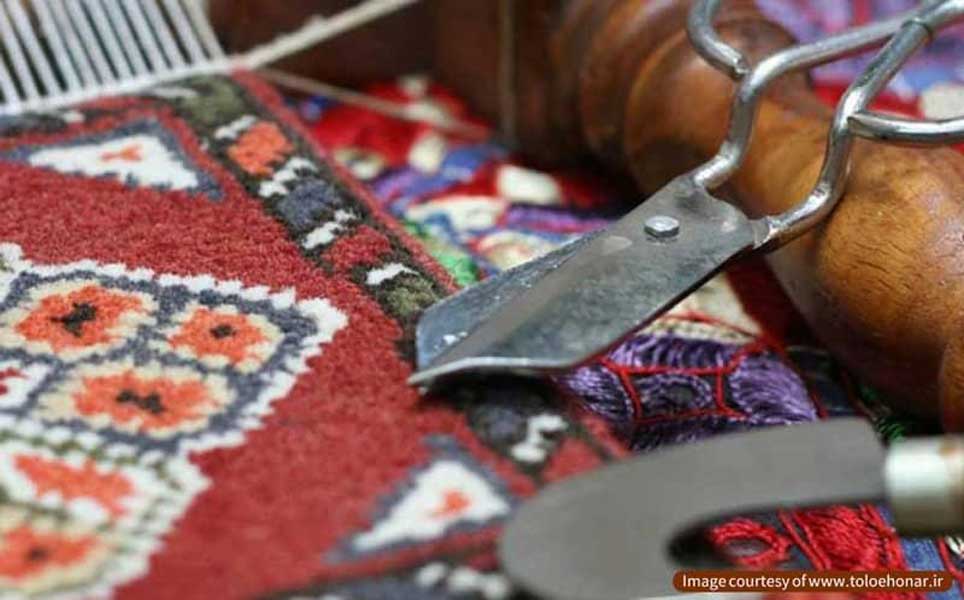
The tools and equipment for traditional kilim weaving are as follows:
Weave Plan
The original Persian kilim is woven without a weave plan, but the modern kilim is woven according to a weave plan. In kilim weaving instruction schools, the first step is to draw a map on special paper and then weave the kilim according to that plan.
Weaving Machine (Weaving Loom)
Weaving machines can be divided into four types:
- plain kilim weaving machines, wheel kilim weaving machines, Jajim weaving machines, and needle kilim or Sumak kilim weaving machines.
Kooji
There are smooth and polished wood frames that are used to balance the kilim. The process of tying the threads to the frame is called Kooji Bandi.
Kilim Weaving Shaneh (Comb)
The combs used in kilim weaving are usually made of metal or wood. Their use in this art is to compress the wefts and arrange the warps. Some combs have longer handles to act as a lever in binding the warp and weft.
Kilim Weaving Scissors
The scissors used in kilim weaving are slightly different from regular tailor scissors. The scissors are used in creating the designs of embossed Kilims, which are very similar to Qali. In these models, scissors are used to cut the piles of the kilim.
Dar
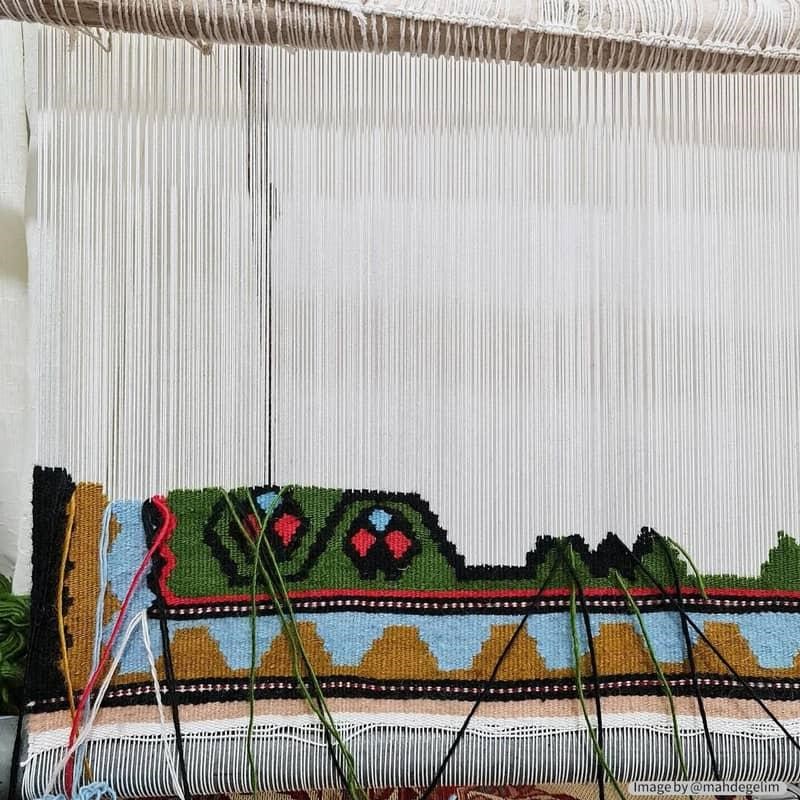
Dar (wooden frame) is an essential tool in most methods of kilim and carpet weaving. Making a simple dar is rather easy and there are ready-to-use Dars in the market. Dar is the framework on which the weaver hangs and weaves the kilim. The kilim is separated after the weaving process is finished.
There are two types of Dars, horizontal and vertical. The horizontal dar is usually used by nomadic tribes who find it easier to transport. There are also three types of vertical fences: revolving Dar, Tabrizi Dar, and fixed Dar.
Kilim Weaving Knife
They use a special knife like scissors to cut the warp and wefts or kilim piles. Kilim weaving knives and scissors are usually made by local blacksmiths who are familiar with the kilim weaving process.
When traveling to nomadic and rural areas, make sure to see and buy traditional Iranian handicrafts. Along with nature tourism, you can take part in the development and revival of the indigenous handicraft industry in accordance with conscious tourism principles.







